At the train station in Bruneck, South Tyrol, looking east.
Month: February 2023
ChatGPT is a miracle of rare device. Here’s how I’m thinking about it.
ChatGPT is based on the same underlying computational architecture as GPT-3, which was released in the summer of 2020. That’s when I started 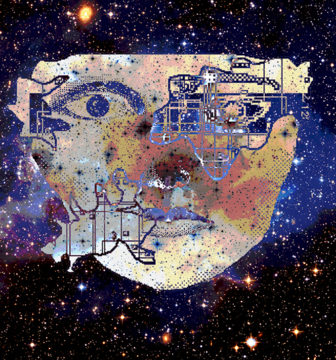 reading “GPT for Dummies” articles. Some were more useful than others, but none of them gave me what I wanted. So I started poking around in the technical literature. I picked up a thing or two, enough to issue a working paper, GPT-3: Waterloo or Rubicon? Here be Dragons. [GPT = Generative Pretrained Transformer]
reading “GPT for Dummies” articles. Some were more useful than others, but none of them gave me what I wanted. So I started poking around in the technical literature. I picked up a thing or two, enough to issue a working paper, GPT-3: Waterloo or Rubicon? Here be Dragons. [GPT = Generative Pretrained Transformer]
Then three months ago OpenAI let ChatGPT loose on the web. WOOSH! The sky’s on fire, the ice caps are melting, the oceans are rising, and baby needs a new pair of shoes. Badly.
I started all over, reading those “Dummy” articles and poking around in the technical literature. But, and this is important, I also spent an enormous time playing around with ChatGPT and blogging about it, writing almost 70 blog posts and four working papers. That taught me a great deal. If only I knew how to read the tea leaves.
All that time and effort, and I still don’t know what’s going on. “This is not good,” says I to myself, “not good at all. If no one’s going to tell me how this puppy works, I’m just going to have to figure it out for myself.”
That’s what I’m doing now. I’m going to write until the last sentence is finished. Then I’m going to send the article off to Abbas, go for a walk, eat dinner, go to bed, wake up Monday morning, and see if it makes sense. There’s a reasonable chance that it will, in which case I’ll feel satisfied for a day and then start all over again, revising my ideas, coming up with new ones, getting frustrated, laughing myself silly, and in general having a grand old time making sense of these strange new machines, these artificial intelligences, these chatbots, these miracles of rare device. Read more »
Is it finally time to care about the metaverse?
by Sarah Firisen
 Google the phrase “is it time to care about the metaverse?” and there are a wealth of articles, mostly claiming that the answer is yes! Are they right?
Google the phrase “is it time to care about the metaverse?” and there are a wealth of articles, mostly claiming that the answer is yes! Are they right?
In the next six months, I’m going to start on a home-building project. While I’ve done home renovations before, building a house from the ground up is a new and scary experience. I’m not a good visualizer; during the home renovation project, I couldn’t look at a bathroom tile and imagine what an entire bathroom would look like using that design. Given this, it was great that our architect used 3D software that enabled us to “walk through” the house plan. But how much more effective would it be if I could really “live” in a virtual copy of the house for a while? If there was a digital twin of the house design in the metaverse, my avatar could inhabit it for a while and get a real feel for whether that kitchen is big enough and whether the tile for the floor is a bit much or just right.
As I’ve written before, my ex-husband and I were very into Second Life about 16 years ago. He was a Senator in the ROMA sim, while I used my software development skills to learn the language for building and scripting to become a fashion designer. Dabbling in virtual architecture and construction, I built my own stores, and I also built my ex-husband a villa on a plot of virtual land he bought in the ROMA sim. Way back then, virtual worlds were mostly escapes from the real world. There was the occasional brand that set up a Second Life store, but they never really seemed to know what to do with the technology. Read more »
Will U.S.-Israel Policies Ever Change?
Jeremy Pressman in the Boston Review:
 In the 1970s and ’80s, many American Jews backed pro-Israel interest groups in Washington, D.C., which quickly gained resources and political influence. By the late 1990s most Jewish leaders not only embraced Israel for the country’s sake but also believed that supporting Israel was key to the survival of U.S. Jews—the largest diaspora Jewish community. Since 1967 Israel’s centrality to Jewish identity has only deepened. The most obvious manifestation is the Birthright program, which was launched in 1999 and has since brought more than 800,000 young American Jews on entirely free ten-day or two-week trips to Israel, with many of its participants visiting the country for the first time. This year the State of Israel celebrates its seventy-fifth anniversary, marking less than a century of existence during which the country has shifted profoundly. Israel is now the most powerful state in the Middle East. Not only is it independent, wealthy, and nuclear-armed, it is also embraced by many Jewish cultural, political, and religious organizations around the world.
In the 1970s and ’80s, many American Jews backed pro-Israel interest groups in Washington, D.C., which quickly gained resources and political influence. By the late 1990s most Jewish leaders not only embraced Israel for the country’s sake but also believed that supporting Israel was key to the survival of U.S. Jews—the largest diaspora Jewish community. Since 1967 Israel’s centrality to Jewish identity has only deepened. The most obvious manifestation is the Birthright program, which was launched in 1999 and has since brought more than 800,000 young American Jews on entirely free ten-day or two-week trips to Israel, with many of its participants visiting the country for the first time. This year the State of Israel celebrates its seventy-fifth anniversary, marking less than a century of existence during which the country has shifted profoundly. Israel is now the most powerful state in the Middle East. Not only is it independent, wealthy, and nuclear-armed, it is also embraced by many Jewish cultural, political, and religious organizations around the world.
Alterman’s book then comes at an opportune time, tracking “the debate over Israel in the United States” and offering a close study of ethnoreligious identity, diaspora relations, and foreign policy as the landscape of Israeli support has grown increasingly complex. The book also teases out four important consequences of American Jews centering the Israeli state in Jewish identity.
More here.
Gene Expression in Neurons Solves a Brain Evolution Puzzle
Allison Whitten in Quanta:
 The neocortex stands out as a stunning achievement of biological evolution. All mammals have this swath of tissue covering their brain, and the six layers of densely packed neurons within it handle the sophisticated computations and associations that produce cognitive prowess. Since no animals other than mammals have a neocortex, scientists have wondered how such a complex brain region evolved.
The neocortex stands out as a stunning achievement of biological evolution. All mammals have this swath of tissue covering their brain, and the six layers of densely packed neurons within it handle the sophisticated computations and associations that produce cognitive prowess. Since no animals other than mammals have a neocortex, scientists have wondered how such a complex brain region evolved.
The brains of reptiles seemed to offer a clue. Not only are reptiles the closest living relatives of mammals, but their brains have a three-layered structure called a dorsal ventricular ridge, or DVR, with functional similarities to the neocortex. For more than 50 years, some evolutionary neuroscientists have argued that the neocortex and the DVR were both derived from a more primitive feature in an ancestor shared by mammals and reptiles.
Now, however, by analyzing molecular details invisible to the human eye, scientists have refuted that view.
More here.
Racism Rebranded
Kenan Malik in Pandaemonium:
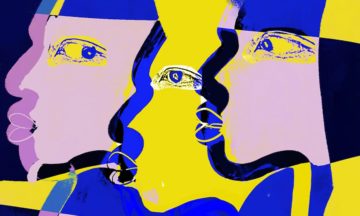 We live in an age in which in most societies there is a moral abhorrence of racism, albeit that in most, bigotry and discrimination still disfigure the lives of many. We also live in an age saturated with identitarian thinking and obsessed with placing people into racial boxes. The more we despise racial thinking, the more we seem to cling to it.
We live in an age in which in most societies there is a moral abhorrence of racism, albeit that in most, bigotry and discrimination still disfigure the lives of many. We also live in an age saturated with identitarian thinking and obsessed with placing people into racial boxes. The more we despise racial thinking, the more we seem to cling to it.
This paradox is at the heart of my new book. Not So Black and White is a retelling of the history both of the idea of race and of the struggles to confront racism and to transcend racial categorisation, a retelling that challenges many of the ways in which we think both of race and of antiracism.
Most people assume that racism emerges when members of one race begin discriminating against members of another. In fact, the opposite is the case: intellectuals and elites began dividing the world into distinct races to explain and justify the differential treatment of certain peoples. The ancestors of today’s African Americans were not enslaved because they were black. They were deemed to be racially distinct, as black people, to justify their enslavement.
More here.
Sean Carroll’s Mindscape Podcast: Molly Crockett on the Psychology of Morality
Sean Carroll in Preposterous Universe:
 Most of us strive to be good, moral people. When we are doing that striving, what is happening in our brains? Some of our moral inclinations seem pretty automatic and subconscious. Other times we have to sit down and deploy our full cognitive faculties to reason through a tricky moral dilemma. I talk with psychologist Molly Crockett about where our moral intuitions come from, how they can sometimes serve as cover for bad behaviors, and how morality shapes our self-image.
Most of us strive to be good, moral people. When we are doing that striving, what is happening in our brains? Some of our moral inclinations seem pretty automatic and subconscious. Other times we have to sit down and deploy our full cognitive faculties to reason through a tricky moral dilemma. I talk with psychologist Molly Crockett about where our moral intuitions come from, how they can sometimes serve as cover for bad behaviors, and how morality shapes our self-image.
More here.
Where on Earth is paradise?
Rory Sullivan in Prospect Magazine:
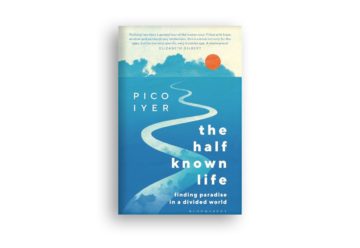 After 50 years of globetrotting, the celebrated travel writer Pico Iyer asks himself whether it is possible to find paradise in a violent, fragmented world. In pursuit of an answer, he stitches together a selection of his trips to beautiful, troubled spots, including Jerusalem and Kashmir, for his latest book. At first, his enquiry seems too wide and too vague. Iyer’s disparate writings on Iran, Israel and Australia only scratch the surface of the problems in each country, while “paradise” itself is defined too broadly. The author’s visit to Broome, a remote town hundreds of miles from Perth, is especially lacking in depth: interesting snippets about, for example, the effect of the 19th-century pearl boom on its Aboriginal community, do not receive further investigation.
After 50 years of globetrotting, the celebrated travel writer Pico Iyer asks himself whether it is possible to find paradise in a violent, fragmented world. In pursuit of an answer, he stitches together a selection of his trips to beautiful, troubled spots, including Jerusalem and Kashmir, for his latest book. At first, his enquiry seems too wide and too vague. Iyer’s disparate writings on Iran, Israel and Australia only scratch the surface of the problems in each country, while “paradise” itself is defined too broadly. The author’s visit to Broome, a remote town hundreds of miles from Perth, is especially lacking in depth: interesting snippets about, for example, the effect of the 19th-century pearl boom on its Aboriginal community, do not receive further investigation.
However, the book improves immensely as it progresses through stops in Sri Lanka, Japan and India—and as Iyer’s conversational skills become more apparent. His exchange with the caretaker of a Sri Lankan colonial cemetery is touching, as is his visit to the Varanasi home of a 78-year-old Indian professor who starts reciting Paradise Lost from memory. Striking images also drift into the text: the roofs of Japanese temples resemble “the prows of seagoing vessels about to sail off into the mist”.
The book’s search for paradise comes to take on an internalised dimension, beyond the aesthetic and religious. To quote Milton, the quest is to find “a Paradise within thee, happier far”. For Iyer, this means coming to terms with uncertainty in a world that “seems always to simmer in a state of answerlessness”.
More here.
Barack Obama’s 2008 speech on race and politics
(Note: Throughout February, at least one post will be dedicated to Black History Month. The theme for 2023 is Black Resistance. Please send us anything you think is relevant for inclusion)
Huey “Piano” Smith (1934 – 2023) Rock-And-Roll Pianist
Paul Berg (1926 – 2023) Biochemist
Tom Luddy (1943 – 2023) Film Producer
various people at The Guardian:
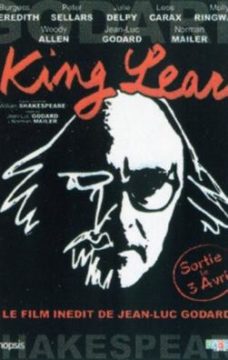 Tom played an incredibly important role in the history of modern cinema. Back in the 1970s, Tom was part of a counterculture generation who saw something new in the arthouse films being made in Europe. To him they were radical in a completely new way. They could change the world. Culture could be political.
Tom played an incredibly important role in the history of modern cinema. Back in the 1970s, Tom was part of a counterculture generation who saw something new in the arthouse films being made in Europe. To him they were radical in a completely new way. They could change the world. Culture could be political.
Tom believed that very deeply – and he brought directors like Jean-Luc Godard, Wim Wenders and Werner Herzog over to the west coast and showed their films to a new generation like Francis Ford Coppola. Out of that came American independent cinema which flourished in the 1990s. But Tom was different from many of his counterculture generation. He was very aware of what happened to those radical ideas once they were injected into Hollywood.
more here. (h/t Brooks Riley)
Sunday Poem
Come In
As I came to the edge of the woods,
Thrush music—hark!
Now it was dusk outside,
Inside it was dark.
Too dark in the woods for a bird
By slight of wing
To better its perch for the night,
Though it still could sing.
The last of the light of the sun
That had died in the west
Still lived for one song more
In a thrush’s breast.
Far in the pillared dark
Thrush music went—
Almost like a call to come in
To the dark and lament.
But no, I was out for stars:
I would not come in.
I meant not even if asked,
And I hadn’t been.
by Robert Frost
from Homage to Robert Frost
Farrar Straus Giroux, New York, 1996
Don’t worry about AI breaking out of its box—worry about us breaking in
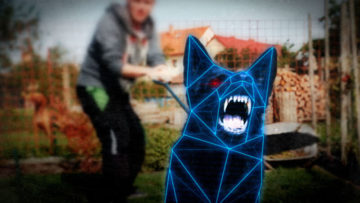 Rob Reid in Ars Technica:
Rob Reid in Ars Technica:
Shocking output from Bing’s new chatbot has been lighting up social media and the tech press. Testy, giddy, defensive, scolding, confident, neurotic, charming, pompous—the bot has been screenshotted and transcribed in all these modes. And, at least once, it proclaimed eternal love in a storm of emojis.
What makes all this so newsworthy and tweetworthy is how human the dialog can seem. The bot recalls and discusses prior conversations with other people, just like we do. It gets annoyed at things that would bug anyone, like people demanding to learn secrets or prying into subjects that have been clearly flagged as off-limits. It also sometimes self-identifies as “Sydney” (the project’s internal codename at Microsoft). Sydney can swing from surly to gloomy to effusive in a few swift sentences—but we’ve all known people who are at least as moody.
No AI researcher of substance has suggested that Sydney is within light years of being sentient. But transcripts like this unabridged readout of a two-hour interaction with Kevin Roose of The New York Times, or multiple quotes in this haunting Stratechery piece, show Sydney spouting forth with the fluency, nuance, tone, and apparent emotional presence of a clever, sensitive person.
For now, Bing’s chat interface is in a limited pre-release. And most of the people who really pushed its limits were tech sophisticates who won’t confuse industrial-grade autocomplete—which is a common simplification of what large language models (LLMs) are—with consciousness. But this moment won’t last.
More here.
America’s Toxic Romance With the Free Market
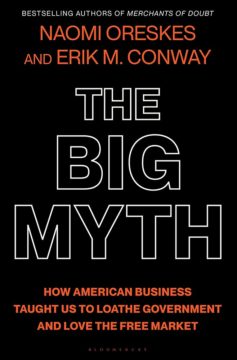 Claudia Dreifus in The Nation:
Claudia Dreifus in The Nation:
The publication of Naomi Oreskes and Erik M. Conway’s Merchants of Doubt: How a Handful of Scientists Obscured the Truth on Issues From Tobacco Smoke to Climate Change in 2010 helped transform how science news was reported in the media. The book persuaded reporters worldwide to become more skeptical of industry-sponsored “experts”—particularly on issues like global warming. Oreskes and Conway hope their latest collaboration, The Big Myth: How American Business Taught Us to Loathe Government and Love the Free Market (Bloomsbury), will have a similar impact. I recently caught up with Oreskes, who teaches science history at Harvard, and is also the author of Why Trust Science, Science on a Mission: How Military Funding Shaped What We Do and Don’t Know About the Ocean, and Plate Tectonics An Insider’s History of the Modern Theory of the Earth. Long ago, in another life, Oreskes was a geologist. During our conversation, we discussed The Big Myth and how free-market economics became a dominant force in American public policy.
—Claudia Dreifus
CLAUDIA DREIFUS: How did the idea behind The Big Myth come to you?
NAOMI ORESKES: After the success of Merchants of Doubt, Erik and I started thinking about doing another book together. At first, we thought we’d write about the technological solutions to climate change. But every time we started, what kept coming up was that a lack of the right technologies wasn’t the problem—most of the technologies we need already exist. But to get them in place, you need the right policies. That’s mostly a political question. That threw us back to something we’d been thinking about since we began researching Merchants of Doubt. In that book, the big question was “Why would intelligent people deny science?” In particular, why would famous scientists attack science to create doubt about the dangers of smoking, the thinning of the ozone layer, and climate change?
More here.
Money as Empire?
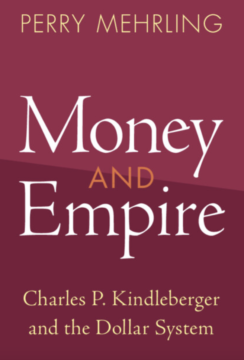 Herman Mark Schwartz in Phenomenal World:
Herman Mark Schwartz in Phenomenal World:
Money makes the world go round, or as Karl Marx put it, Geldgespräche, Quatsch-Spaziergänge. How does this work at the global or international level? Perry Mehrling’s elegantly written biography of the MIT economist Charles Poor Kindleberger illuminates the relationship between money and the global structure of economic and political power. Kindleberger, a distinguished economic historian, was in many ways, and to his own surprise, a central and founding figure in the political science subfield of International Political Economy (IPE). Breaking with the emerging abstract economic models of his time, he developed an empirical and practical approach that emphasized the importance of the political infrastructure underpinning global financial markets, and the ever present possibility of crisis. Lurking in the background of this biographical narrative is a greater story about empire, left whispering in the softest possible voice—a Straussian sotto voce.
Servant of empire?
Empires run on money. In durable empires, that money pays bureaucrats who run the empire, so empires need people as well. Kindelberger’s early life trajectory was well suited to the bureaucratic needs of the mid-twentieth century American empire. As Mehrling repeatedly notes, Kindleberger was a WASP through and through. WASPs—White Anglo-Saxon Protestants—were the original ethnonational core of the Thirteen Colonies, in a definition that expanded enough to encompass the initially “foreign” German and Dutch settlements in the mid-Atlantic colonies but never enough to include the subsequent wave of immigrant Irish Catholics, let alone enslaved Africans.
More here.
A Note-Perfect Pianist’s Memoir
Peter Conrad at The Guardian:
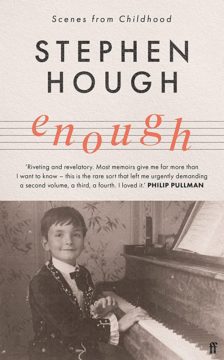 “A writer is God,” says Hough admiringly, thinking of God – he is a Catholic convert – rather than claiming godlike powers for himself. He then quotes the Bible on the word being made flesh as “an idea floating in the air is caught, a concept becomes carnal”. The piano leaves ideas afloat, airily uncatchable: Hough’s book describes “the liquid lasso” of a stone thrown into a pond in Debussy’s Reflets dans l’eau, and in the notes to his recent recording of Federico Mompou’s Música Callada he remarks that these brief, whispery religious meditations evaporate as they are played. Defying the monochrome abstraction of the keyboard, Hough always sets himself to make sounds tell stories without words. In his reimagining, Tippett’s Piano Concerto proceeds from an orchestral rumbling “under the soil of the earth to the tinkle of arpeggios tracing a delicate tune above the treetops”.
“A writer is God,” says Hough admiringly, thinking of God – he is a Catholic convert – rather than claiming godlike powers for himself. He then quotes the Bible on the word being made flesh as “an idea floating in the air is caught, a concept becomes carnal”. The piano leaves ideas afloat, airily uncatchable: Hough’s book describes “the liquid lasso” of a stone thrown into a pond in Debussy’s Reflets dans l’eau, and in the notes to his recent recording of Federico Mompou’s Música Callada he remarks that these brief, whispery religious meditations evaporate as they are played. Defying the monochrome abstraction of the keyboard, Hough always sets himself to make sounds tell stories without words. In his reimagining, Tippett’s Piano Concerto proceeds from an orchestral rumbling “under the soil of the earth to the tinkle of arpeggios tracing a delicate tune above the treetops”.
more here.
U.S. scientific leaders need to address structural racism, report urges
Katie Langin in Science:
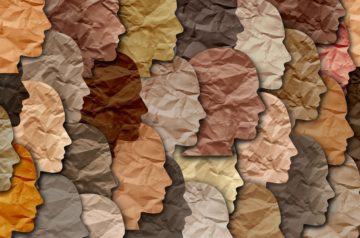 Leaders in the U.S. scientific community must dismantle the power structures that lead to racial inequities within their organizations and create an environment in which everyone feels supported, says a report released today by the U.S. National Academies of Sciences, Engineering, and Medicine. The 359-page report includes 12 recommendations for leaders who want to foster change. “There is no magic bullet; there’s no one single answer,” said Gilda Barabino, president of the Olin College of Engineering and co-chair of the committee that wrote the report, in a webinar today. “We need a multitude of approaches, and we need to do them strongly and meaningfully.”
Leaders in the U.S. scientific community must dismantle the power structures that lead to racial inequities within their organizations and create an environment in which everyone feels supported, says a report released today by the U.S. National Academies of Sciences, Engineering, and Medicine. The 359-page report includes 12 recommendations for leaders who want to foster change. “There is no magic bullet; there’s no one single answer,” said Gilda Barabino, president of the Olin College of Engineering and co-chair of the committee that wrote the report, in a webinar today. “We need a multitude of approaches, and we need to do them strongly and meaningfully.”
A multipronged strategy is ultimately what’s needed to really move the needle, agrees Stephen Thomas, a professor at the University of Maryland, College Park, who was not involved in creating the report. Past efforts have often involved incremental changes, says Thomas, a leader of the National Research Mentoring Network funded by the U.S. National Institutes of Health: “Here’s a study here and let’s see if we can scale it, and here’s a study there and see if we can scale it—all one by one.” In contrast, he says the report’s call for implementing many changes at once is “a move in the right direction and it’s very bold at a time when we’re literally seeing elected officials … undermine the very objective evidence that the research is pointing out.”
More here.
Spirituality In The Age Of Science
Julien Crockett and Alan Lightman at the LARB:
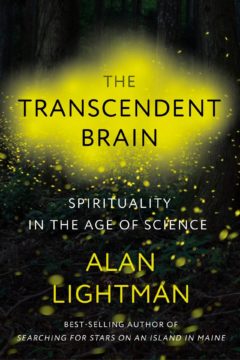 When did you begin on the project of reconciling a scientific worldview with human experience?
When did you begin on the project of reconciling a scientific worldview with human experience?
Probably as a child. It started with my sort of schizophrenic interests in both the sciences and the arts. I did experiments and built rockets. I wrote poetry in which I expressed my awe of the world, my bafflement, my questions.
In one of your earlier books, The Accidental Universe, you write that theoretical physics is “the deepest and purest branch of science. It is the outpost of science closest to philosophy, and religion.” Did you become a theoretical physicist because it allowed you to maintain these dual interests?
Yes, I think so. Of course, in college, I took a lot of courses, and not just science courses. But when it came time to choose a particular science that I wanted to put most of my effort into, it was theoretical physics for the reasons you mentioned. Also, I was attracted by the fact that physics is the most fundamental of all the sciences. I like to dig into the world as deeply as possible.
more here.

